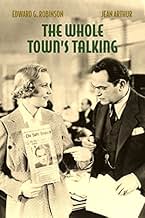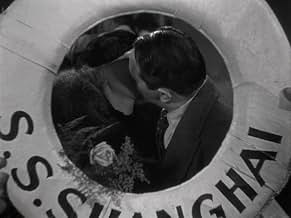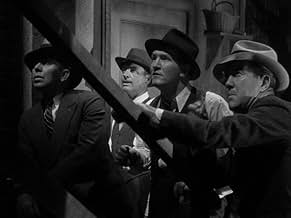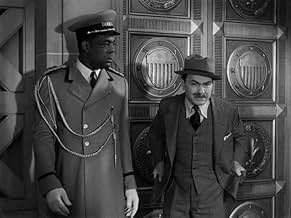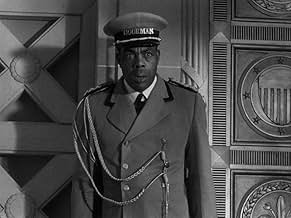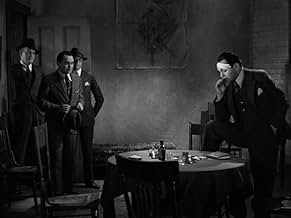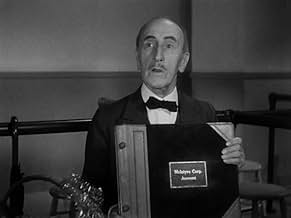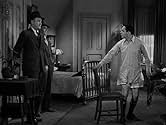ÉVALUATION IMDb
7,2/10
3,5 k
MA NOTE
Ajouter une intrigue dans votre langueA meek milquetoast clerk is mistaken for public enemy N° 1, and the notorious killer takes advantage of the situation.A meek milquetoast clerk is mistaken for public enemy N° 1, and the notorious killer takes advantage of the situation.A meek milquetoast clerk is mistaken for public enemy N° 1, and the notorious killer takes advantage of the situation.
Harry Abrahams
- Convict
- (uncredited)
Ernie Adams
- Reporter
- (uncredited)
Carmen Andre
- Clerk
- (uncredited)
Chester A. Bachman
- Policeman
- (uncredited)
Eddie Baker
- Policeman
- (uncredited)
Lucille Ball
- Bank Employee
- (uncredited)
H. Barnum
- Undetermined Secondary Role
- (uncredited)
George Barton
- Policeman
- (uncredited)
Histoire
Le saviez-vous
- AnecdotesThe $250.00 per week that Jones is to get for writing the article in this 1935 comedy translates to $4,999.23 per week in 2019 dollars.
- GaffesWhen Jonesy leaves his apartment in a rush he forgets to turn off the taps and his tub is (torrentially) overflowing. But when he returns from the police much later in the day there is no water anywhere.
- Citations
Arthur Ferguson Jones: You know something, a woman is only a woman, but a good cigar is a smoke.
- ConnexionsEdited into Michael Jackson's This Is It (2009)
Commentaire en vedette
Here Robinson plays the role of a mild-mannered bookkeeper, that of a body double in the person of a murderous gangster on the run - Killer Mannion, and he also effectively plays two other roles - that of the bookkeeper pretending to be the gangster, and the gangster pretending to be the bookkeeper. This could get very confusing, especially in the case of the latter two roles, but as the viewer you will be pretty sure you know who you're looking at by the circumstances. However, you'll still be bowled over by the subtlety of Robinson's performance - I know I was.
Jean Arthur plays Jones' (Robinson's) would-be girlfriend. She works in the same place as Jones, but longs for more than a hum-drum existence. When Jones tells her his hopes and dreams of being a writer and traveling to exotic places, she encourages him, and seems to see what he could be even if Jones doesn't quite see it yet. Arthur has what amounts to one of the funniest scenes in the movie, and there are many candidates. When the police first pick up and arrest Jones, believing him to be Mannion, they pick up Arthur too, thinking that she is his "gun moll". She has some fun with this and starts using gangster slang and mannerisms and confessing that Mannion committed every crime that the police ask her about.
One of my favorite supporting players of the 30's shows up here too - Ed Brophy, who was an assistant director over at MGM until Buster Keaton put him into a small but important role in "The Cameraman" in 1928. Once sound came in Brophy was perfect for playing supporting Runyonesque parts. Here Brophy plays an associate of Killer Mannion who is picked up by the police and makes a deal, promising to put the finger on Mannion. In return the police have to keep him safe in jail until Mannion is picked up. Brophy's character is brave whenever he thinks Manion has been captured and a blubbering coward whenever he realizes Mannion is still free.
Highly recommended as a great screwball comedy that shows the versatility of not only Edward G. Robinson, but of director John Ford.
Jean Arthur plays Jones' (Robinson's) would-be girlfriend. She works in the same place as Jones, but longs for more than a hum-drum existence. When Jones tells her his hopes and dreams of being a writer and traveling to exotic places, she encourages him, and seems to see what he could be even if Jones doesn't quite see it yet. Arthur has what amounts to one of the funniest scenes in the movie, and there are many candidates. When the police first pick up and arrest Jones, believing him to be Mannion, they pick up Arthur too, thinking that she is his "gun moll". She has some fun with this and starts using gangster slang and mannerisms and confessing that Mannion committed every crime that the police ask her about.
One of my favorite supporting players of the 30's shows up here too - Ed Brophy, who was an assistant director over at MGM until Buster Keaton put him into a small but important role in "The Cameraman" in 1928. Once sound came in Brophy was perfect for playing supporting Runyonesque parts. Here Brophy plays an associate of Killer Mannion who is picked up by the police and makes a deal, promising to put the finger on Mannion. In return the police have to keep him safe in jail until Mannion is picked up. Brophy's character is brave whenever he thinks Manion has been captured and a blubbering coward whenever he realizes Mannion is still free.
Highly recommended as a great screwball comedy that shows the versatility of not only Edward G. Robinson, but of director John Ford.
- AlsExGal
- 26 mars 2010
- Lien permanent
Meilleurs choix
Connectez-vous pour évaluer et surveiller les recommandations personnalisées
- How long is The Whole Town's Talking?Propulsé par Alexa
Détails
- Durée1 heure 33 minutes
- Couleur
- Rapport de forme
- 1.37 : 1
Contribuer à cette page
Suggérer une modification ou ajouter du contenu manquant

Lacune principale
By what name was The Whole Town's Talking (1935) officially released in India in English?
Répondre

